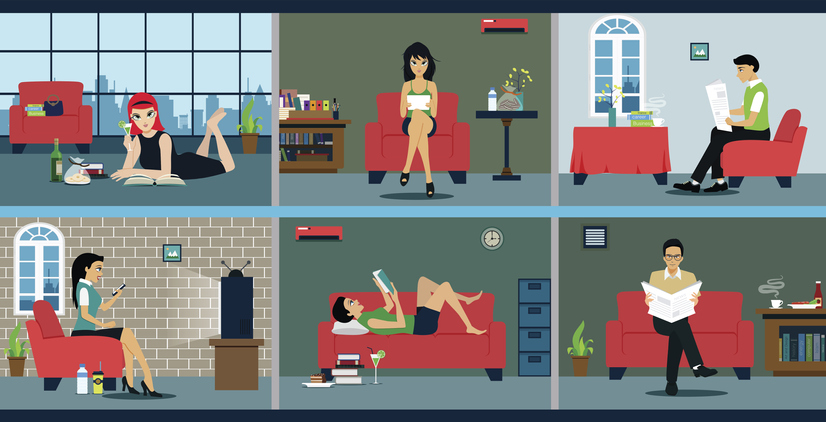The Kind of Sitting We Need to Stand Up About!

By Joy Stephenson-Laws, J.D., Founder
Think about it. Our daily lives appear to be “designed” to sit the majority of the day. Working, scrolling social media, watching television, playing video games, eating, driving and reading are all activities that often involve prolonged periods of sitting.
“Americans are becoming increasingly sedentary, spending almost a third of their waking hours sitting down and computer use is partly to blame, a new study found,” according to one report from 2019.
“Over almost a decade, average daily sitting time increased by roughly an hour, to about eight hours for US teens and almost 6 1/2 hours for adults, according to the researchers.”
And over the past year as we have battled in the fight against COVID-19, some evidence suggests that what I like to call this “sitting pandemic” has gotten even worse. With the closing of gyms, children being homeschooled and people taking advantage of grocery delivery services out of fear of actually going to the grocery store and possibly being exposed to the virus, many people are not getting in the daily steps that they need to be and sitting even more than they did in the pre-COVID world.

Sitting too much, which some medical experts have gone as far as to call it “the new smoking,” has been linked to a variety of health problems including obesity, fatty liver disease, diabetes, cardiovascular problems and even premature death.
I have been aware for a long time now that prolonged periods of sitting is not good for our overall health, but what I did not consider is how different types of sitting may affect us.
Apparently, not all sitting is created equally. New research discusses different types of sitting and relates it to subjective well-being.
“Subjective well-being encompasses an individual's own evaluation of their quality of life. It includes concepts like affect (positive and negative feelings) and life satisfaction,” according to this Medical Xpress report that discusses the research.
“Interestingly, these evaluations can conflict with physical health outcomes. For example, a person could have diabetes but still report good subjective well-being, while someone with no physical health conditions may report poor subjective well-being.”
So, here are some examples of different types of sitting:
- Sitting while watching television
- Sitting while reading a book
- Sitting at home eating a meal alone
- Sitting with friends or family and having a meal
- Sitting at a computer
- Sitting while scrolling social media on your phone
You may notice that some of these examples of sitting involve screen time while others do not. Or some involve socializing while others involve being alone. The research found evidence which suggests that the type of sitting you do may have a significant impact on your subjective well-being.
“For example, screen time was consistently and negatively associated with subjective well-being. However, domains like socializing, playing an instrument and reading actually demonstrated positive associations with subjective well-being,” according to the report.
This makes perfect sense to me, because health and well-being is really about the whole body and mind. Mindlessly watching television or scrolling social media does not stimulate your mind the way that reading, playing an instrument or working on a puzzle would. And, of course, it is very important to socialize regularly if possible. Socializing has been extremely difficult for people over the past year, but luckily there may be light at the end of the tunnel as people continue to get vaccinated.
It’s also important to make the best with what we have. You may not be able to have an indoor party yet, but you can go on a hike with a friend while wearing a mask or maybe eat at an outdoor restaurant if you are comfortable and not high risk. These are all personal decisions, but I think it’s really important to consider what type of sitting your day mostly involves.
“Our review suggests that some types of sedentary behavior may be beneficial to quality of life. Rather, not all sitting is the same in terms of subjective well-being. So when people work towards reducing their sitting time, they should consider not just how much to reduce, but what kind to reduce,” according to the report.
So perhaps instead of watching television in the evening (the average American spends more than four hours per day watching television), read a book, meditate, work on a puzzle or consider playing an instrument. I personally love playing the piano.
With all of this said, we still need to move more.This all isn’t to say that we can continue to sit as long as we practice potentially better types of sitting. And the truth is that so many of us cannot completely avoid prolonged hours of sitting and screen time due to our jobs.
But you can be proactive.
Here are some suggestions for less sitting and more movement:
- Consider getting a standing desk (If you work from home, now is the time to create your workspace to help improve your health).
- Take walking or squat breaks (do a few squats every 30 minutes or so). You can even commit to climbing a few flights of stairs if these are accessible to you.
- Make working out in the morning a priority. This helps set healthy intentions for the day (even if it is just for 15 to 20 minutes).
- If you are not already, consider being a dog owner. I walk more than a mile a day, thanks to my dogs!
- Replace evening television time with walking (if the climate you live in permits). You can even do some stretches or jumping jacks doing commercial breaks.
- Always park far away from the door when running errands. You’d be surprised by how many extra steps you can get in per week by doing this.
- Hike, bike, swim, play golf or do whatever you enjoy on the weekends when you have more free time.
- Encourage your kids to play sports. Limit screen time from video games, television and smartphones.
- Enlist the help of an app. As much as technology has encouraged us to sit, we can also use it to our advantage. There are apps you can download that will remind you to stand up and help you access if you are moving enough.
As always, do not forget nutrition!
What we put in our bodies is just as (if not more) important as how much we move our bodies. Maintain a healthy, nutrient-rich diet by eating plenty of fresh fruits and vegetables and avoiding processed and ultra-processed foods as much as possible. It is also important to take routine nutrient tests in order to definitively determine if you have any nutrient imbalances or deficiencies. If you do, a competent healthcare professional can work with you on making the necessary dietary changes and recommend quality supplements if necessary.
Enjoy your healthy life!
Disclaimer: This article is not intended to provide medical advice. Please consult with your doctor or another competent healthcare practitioner to get specific medical advice for your situation.
The pH professional health care team includes recognized experts from a variety of health care and related disciplines, including physicians, attorneys, nutritionists, nurses and certified fitness instructors. This team also includes the members of the pH Medical Advisory Board, which constantly monitors all pH programs, products and services. To learn more about the pH Medical Advisory Board, click here.







